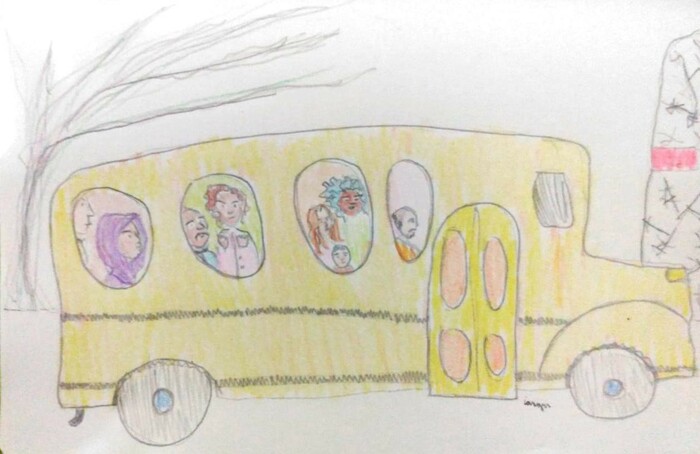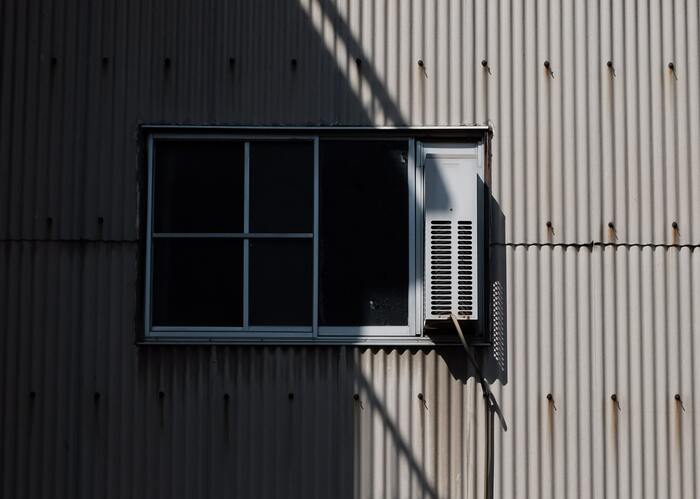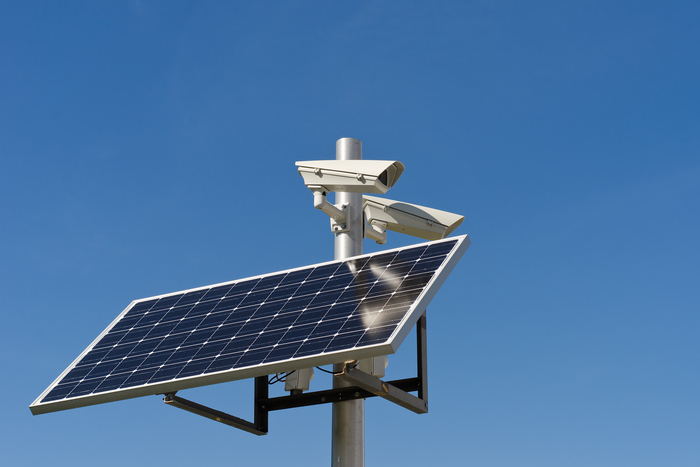Stella Maynard
March 2021
Abolition has to be “green”. It has to take seriously the problem of environmental harm, environmental racism and environmental degradation. To be “green”, it has to be “red”. It has to figure out ways to generalize the resources needed for well-being for the most vulnerable people in our community.
— Ruth Wilson Gilmore
In 2007, the Australian Federal Police hosted a conference in Canberra called International Policing: Towards 2020. Over three hundred police and military officials from the world’s major law enforcement organisations gathered together to share their visions of policing in ‘the not-so-distant future’ (Keelty 2007, 3). The police speculated about strategic challenges of national security, environmental collapse, mass displacement, and global pandemics. The Australian Police Commissioner’s welcome address positioned policing and militarisation as critical social infrastructures that, in 2020, would ‘ensure safety and that security prevails’ in a world defined by its ‘dramatic state of flux’ (Keelty 2007, 3). Echoing these sentiments, environmentalist and conservationist Tim Flannery prophesied that ‘policing will bear a large burden for responding to the societal stresses that extreme weather events create’ (Flannery 2007, cited in Chambers 2011). At one point during the conference, all of the police got together and planted hundreds of trees. It was, in their words, ‘a concrete gesture toward a safer and more secure future’ (Keelty 2007, 5).
That same year, Ruth Wilson Gilmore (2007) published Golden Gulag: Prisons, Surplus and Opposition in Globalising California. The book’s epilogue opens with a group of people on a bus travelling towards a different kind of conference. ‘Joining Forces: The Fight for Environmental Justice and Against Prisons’ brought together farmworkers, incarcerated peoples’ families, urban activists, prison abolitionists, and environmental justice organisers. Juana Gutiérrez of Madres del Este de Los Angeles (a grassroots environmental justice organisation) opened the gathering. She shared how the mothers who she organised alongside had been struggling for two decades ‘to protect their kids – from police, pollution, and prisons’ (Braz and Gilmore 2006, 98).

It’s 2021 now and these not-so-distant futures are here. This article makes the case for carceral power and the infrastructural materiality of prisons to be understood in relation to climate crises. The debilitation of incarcerated people in prisons across this continent is amplified by environmental forces like the weather, which is often weaponised by prison infrastructure itself. Here, I want to ask: How is carceral power assuming new forms in the context of climate crises? Under the threat of intensifying state violence, what might an instance of infrastructural improvisation in a Western Australian ‘green’ prison tell us about abolition practised under constraint? In spite of the terms of their existence and environment being so over-determined by their gaolers, how are people locked in prisons forging breathing room?
Weaponised Weathers
The carceral system has a remarkable capacity to renovate, consolidate, and reproduce itself in the face of economic and climate crises. Across the Australian continent, prisons are weaponising the weather, turning sweat into panic, summer into fear, and breathlessness into premature death. As Nicole Starosielski’s (2019) history of thermal violence in US prisons shows, state practices such as constraining people’s mobility or re-engineering the distribution of heat in cells are enacting bodily harm ‘through proximate, intimate, and architectural means’ (3). Prisons, in other words, are producing and exacerbating the dangers of extreme heat.

Ferocious sun in unshaded yards, breathlessness in stuffy cells, forced immobilisation in concrete complexes that accumulate heat, the denial of regular access to cool and clean drinking water, bitter cold concrete and thin blankets, absent air-conditioners, walls that leak, and mattresses coated in toxic mould. At Roebourne Regional Prison (Western Australia), the state refuses to install air conditioners, even though the daily average temperature in summer is above 40°C. People are left to languish with the debilitating effects of heat-induced illnesses all season (Hussey 2020; Gartry 2016). At the Launceston Reception Centre (Tasmania), nurses took it upon themselves to begin monitoring cell temperatures after seeing women exiting their poorly ventilated cells ‘gasping for air’. At Broome Regional Prison (Western Australia), while guards take sick leave due to their constant exposure to black mould, imprisoned people – the majority of whom are Aboriginal – are denied any possibility of respite (Office of the Inspector of Custodial Services 2017a). The stories of people detained in Australia’s regime of immigration prisons recall similarly debilitating state-produced violence. Manus Regional Processing Centre, or what Behrouz Boochani (2018) refers to as Manus prison, treats people ‘like pieces of meat in a metal pressure cooker’ (168), as fans ‘contend against the harrowing heatwave […] struggling against the suffocation that besieges the tent’ (127).
Never has the violence of the weather under carceral-colonialism been so apparent than when senior Ngaanyatjarra lore man Mr Ward was killed in police custody. The Western Australian Department of Corrections forced Mr Ward into the back of a transport van – a steel pod with no windows, no fresh water, and no cooling mechanisms. It was a hot, 42°C day, as the van travelled along a 360km-long stretch of road between Laverton and Kalgoorlie. The airless interior of the prison transport van heated up like a furnace, killing Mr Ward of heat stroke by the time they arrived at Kalgoorlie jail. Far from an individual frailty or vulnerability (as many coronial inquests position deaths in custody [Whittaker 2018]), Mr Ward was killed by the neglect of a colonial carceral system. The state knew that the van’s air-conditioning system was broken yet had done nothing to prevent people from suffering heatstroke. The ‘killing indifference’ of colonialism materialised in heat, air, and water (Razack 2011, 353).
Through a combination of institutional indifference, deliberate neglect, and intentional atmospheric intensification, prisons across Australia are debilitating incarcerated people. As Gilmore notes, although prisons morph into different forms, at its core criminalisation ‘remains a complicated means and process to achieve a simple thing: to enclose people in situations where they are expected, and in many ways compelled, to sicken and so die’ (Gilmore 2017). But, given that ‘crises are spatially and sectorally uneven, leading to different outcomes for different kinds of people in different kinds of places’ (Gilmore 2007, 55), the relationship between climate crises and carceral power in Australia is highly differentiated. The balance between indifference, neglect, and care is constantly re-organised through reform.
‘Green’ Prisons and the Ruse of Ecological Goodness
Across Australia prisons are being remade according to the values of liberal environmentalism. Like many other state infrastructures and architectures, prisons are being retrofitted and newly constructed with seductive, yet limited, technological ‘solutions’ to complex ecological problems. The Queensland Government’s ‘Greening Corrections’ agenda is leading to the development of carbon-neutral prisons. In New South Wales, there is the pastoral romance of self-sufficient agriculture – a prison labour scheme where people work on farms to bring food ‘from the prisons’ paddocks to the prisoners’ plates’ and ‘reduce the jail system’s carbon footprint by slashing the number of truck journeys required to transport fresh food around the state.’ Even private prison operator Serco has adopted a ‘template for a restorative and environmentally sustainable penal estate’, as part of a Curtin university-funded research project that aims to design an ‘environmentally sustainable prison regime’.
The Clarence Correctional Centre – opened this year south of Grafton, NSW – has been praised for ‘leading the way with innovations that will reduce the centre’s impact on the environment’. The prison has supposedly embedded sustainability in all areas of its operation, featuring ‘fit-for-purpose infrastructure’, daylight harvesting technology, a zero waste to landfill model, and technocratic solutions that reduce carbon emissions. It is also Australia’s largest prison. Clarence Correctional Centre was built as a part of the NSW Government’s ‘Better Prisons Program’, which is constructing an ‘additional 7,000 beds across the state’ (Department of Communities and Justice 2016).
Angela Davis describes reform as a political program that tends to render regimes of enclosure ‘impermeable to change’, resulting ‘in bigger, and what are considered “better,” prisons’ (Davis and Rodriguez 2000, 216). It’s no surprise, then, that Australia’s ‘greening’ of prisons has coincided with the expansion of carceral geographies. This is the paradox at the heart of all green prison projects: while the state stages its ecological goodness, it is all too often ‘the system, rather than the environment, which is being “sustained”’ (Moran and Jewkes 2014, 343).

Infrastructural Improvisation and Abolition
The West Kimberley Regional Prison – opened in 2012 – is one prison that is regularly ‘hailed as a game changer’, a ‘landmark in the correctional system’, and ‘the world’s first culturally appropriate Indigenous prison’. Commentators are ‘struck by the [prison’s] sensitivity and thoughtfulness’ and how it ‘meet[s] cultural and environmental needs’ (Grant and Hobbs 2013). Even the 5.5 metre high, double-layer, ultra-securitised steel perimeter fence is an object heaped with praise: ‘the galvanized treatment of this barrier almost disappears in the shimmering Kimberley light’, one architect writes.
When the prison was constructed, the state attached magnets to the top of cell doors; the magnets are connected to electronic sensors, which trigger the air-conditioning system to turn off whenever cell doors are open. The building dictates that people can have a breeze and adequate ventilation, or the coolness of air-conditioning, but never both. Return to a stuffy room that has accumulated heat, or don’t leave at all. Invoking an orthodoxy of energy efficiency, the Custodial Inspector says that this infrastructural dictate ‘makes sense, as too many people in prisons fail to turn off electrical items when leaving their rooms and far too much power is wasted’ (Office of the Inspector of Custodial Services 2017b, 11).

Counter to the state’s deferrals to environmental self-responsibility, these infrastructural dictates clearly don’t ‘make sense’ for the people – 95 per cent of whom are Aboriginal – forced to languish in the prison. In March 2017, at the West Kimberly Regional Prison, it was scorching hot and the Custodial Inspector was visiting the prison. A single line in the Inspector’s report reads: ‘prisoners had discovered that removal of magnets installed at the top of their room doors prevented the air-conditioner from turning off’ (Office of the Inspector of Custodial Services 2017b, 11). People had realised that by tampering with cell doors they could escape the prescriptions of the carceral infrastructure.
While at first this scene seems a minor instance of infrastructural improvisation, it can be understood as a powerful instance of how abolition geographies are ‘made, on the ground, everywhere along the route’ (Gilmore 2017). Consider the initial observation: someone paused on the doors, considered what it was that prevented the air-conditioning from staying on, and figured out how the cooling system was engineered. Then, the material work: how were the magnets removed? How were the tools to dislodge the magnets obtained (or made) under the surveilling eye of the prison? Imagine, then, the gossip: the way that information and resources would have been covertly shared throughout the unit.
This infrastructural improvisation is an instance of collective self-defence against the deathly violence produced by coercive state infrastructures. If fugitivity is ‘a desire for, and a spirit of, escape’ (Moten 2017, viii), then this act can be understood as evading the terms of human-environmental relation imposed by the carceral regime. It is mutual aid practised under extreme constraint, a collective effort to meet peoples’ need to stay cool, to stay alive, in extremely hot conditions.
Prison management viewed the removal of magnets as a threat to its authority. A notice outlining severe penalties ‘for tampering or being in possession of a magnet’ was posted in each unit (Office of the Inspector of Custodial Services 2017b, 11). The threat to the state was not an increased energy bill, nor simply the fact that the prison’s regime to control had been undermined, but the prospect that people were creatively articulating the imperative of their communal wellbeing.
While the carceral system has a remarkable capacity to reproduce itself in the midst of crises, the process of ‘green’ co-option is not inevitable. As an alternative to uncritically accepting a cycle of reform and reproduction in the throes of ecological collapse, we can study how people are constantly making abolition geographies.
If abolition, as Gilmore (2018) tells us, ‘already exists in fragments and pieces, experiments and possibilities’, then studying how people have, and continue to, make life in the face of deathly systems is critical to building towards an abolitionist future. Animated by a pursuit for bodily autonomy, the covert removal of the cell-door magnets in that Western Australian ‘sustainable’ prison shows us how abolition is the co-constitutive work of undermining carceral power and forging infrastructures premised on communal care and well-being (rather than punishment, exile, and scarcity). Tabitha Lean speaks about abolition as a verb and an accumulation of small acts: it is ‘two pronged work’. For Lean, Abolition is ‘tearing down life-sucking systems and building systems that breathe life back into communities.’ By participating in the infrastructural organisation of heat, air and life, people at West Kimberley Regional Prison did just that. In the cracks and gaps of architectures fundamentally premised on un-freedom, they forged breathing space.
Works Cited
Boochani, Behrouz. 2018. No Friend But the Mountains: Writing from Manus Prison. Sydney: Pan Macmillan.
Braz, Rose and Gilmore, Craig. 2006. ‘Joining Forces: Prisons and Environmental Justice in Recent California Organising.’ Radical History Review, 96 (Fall): 95-111.
Chambers, David. 2011. ‘Policing and Climate Change.’ The Australian Journal of Emergency Management, 26 (3): 54-61.
Davis, Angela Y. and Rodriguez, Dylan. 2000. ‘The Challenge of Prison Abolition: A Conversation.’ Social Justice, 3 (81): 212-218.
Department of Communities and Justice. 2016. Better Prisons Means More Beds for Inmates and More Jobs for Locals. Sydney: New South Wales Government.
Gilmore, Ruth Wilson. 2007. Golden Gulag: Prisons, Surplus, Crisis, and Opposition in Globalising California. Berkeley: University of California Press.
Gilmore, Ruth Wilson. 2017. ‘Abolition Geography and the Problem of Innocence.’ In Gaye Theresa Johnson and Alex Lubin (eds.) Futures of Black Radicalism. London and Brooklyn: Verso Books.
Gilmore, Ruth Wilson. 2018. ‘Interview: Making Abolition Geography in California’s Central Valley with Ruth Wilson Gilmore.’ The Funambulist.
Keelty, Mick. 2007. ‘Embracing the Future of Law Enforcement – International Policing Toward 2020.’ Platypus: Journal of Australian Federal Police, 97: 3-9.
Moran, Dominique and Jewkes, Yvonne. 2014. ‘“Green” Prisons: Rethinking the “Sustainability” of the Carceral Estate.’ Geographica Helvetica, 69 (5): 345-353.
Moten, Fred. 2017. Black and Blur. Durham: Duke University Press.
Office of the Inspector of Custodial Services. 2017a. 2017 Inspection of Broome Regional Prison. Perth: Government of Western Australia.
Office of the Inspector of Custodial Services. 2017b. 2017 Inspection of West Kimberley Regional Prison. Perth: Government of Western Australia.
Razack, Sherene. 2011. ‘Timely Deaths: Medicalizing the Deaths of Aboriginal People in Police Custody.’ Law, Culture and the Humanities, 9 (2): 352-374.
Starosielski, Nicole. 2019. ‘Thermal Violence: Heat Rays, Sweatboxes and the Politics of Exposure.’ Culture Machine, 17: 1-27.
Whittaker, Alison. 2018. ‘“Dragged like a dead kangaroo”: Why Language Matters for Deaths in Custody.’ The Guardian. 8 September.